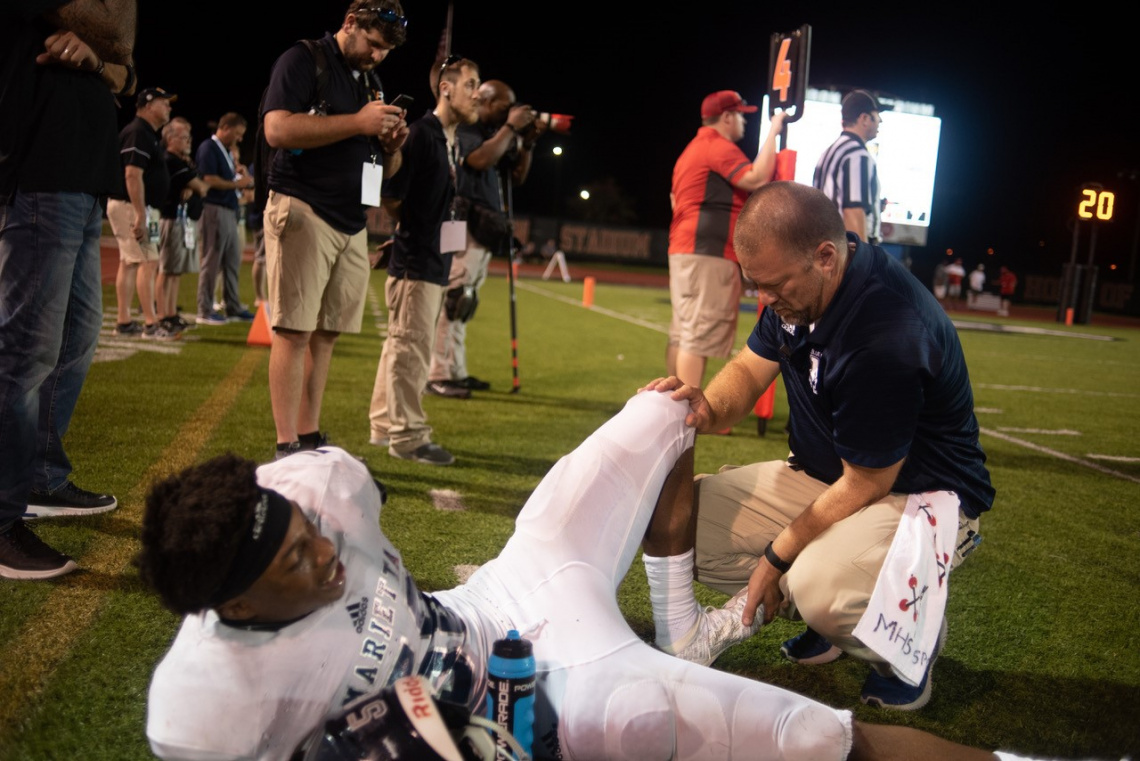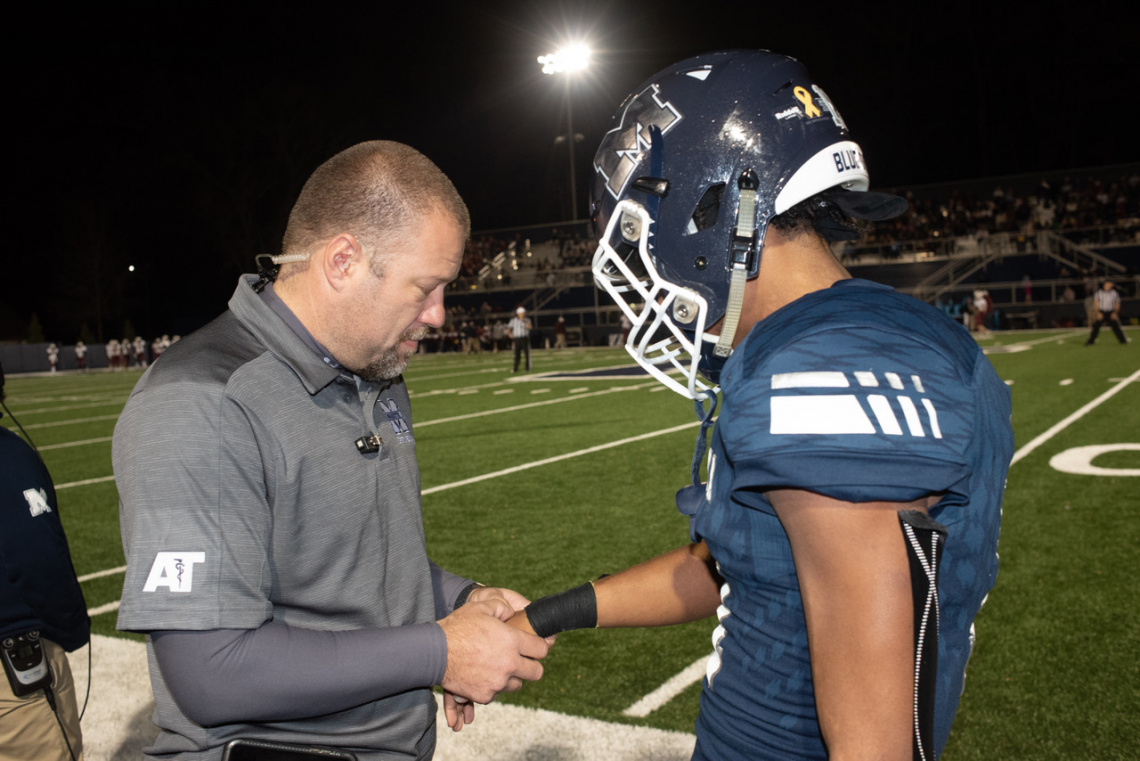
In the near 60,000-person town of Marietta, Georgia, Jeff Hopp, LAT, ATC, joined Marietta High School in 2002 as the only athletic trainer on the sports medicine team, which also included a physician and six athletic training student aides. Through his near 20-year career with Marietta High School, Hopp has been able to get the support of administration and the community by educating them on the importance of prioritizing athletic training services.
“I worked hard to get my administration to see the value athletic trainers bring to the table on many fronts,” Hopp said. “It took time but, eventually, I was able to convince the administration that an athletic trainer would be a great fit to teach classes in our health care occupations pathway.”
By 2015, a second AT was hired. Not long after hiring the second AT, the administration went to Hopp to discuss hiring an additional AT to expand the health care occupation pathway, Hopp said. The following year, in 2016, another AT was hired – bringing the total to three.
“In the fall of 2018, I was actually just chatting with our superintendent at a softball game about some projects we had been working on, and he asked me where we had gaps that needed to be filled and what we could be doing better,” Hopp said. “I told him we needed to provide better care for our middle school athletes, and he asked me how we could do it. I proposed a partnership with a hospital or physical therapy clinic to split the cost, and he liked the idea. This past fall we were able to develop a partnership with a PT clinic to provide a fourth athletic trainer who provides coverage for our middle school athletics as well as assisting us at the high school.”

The athletic training aide program, which now extends into the middle school, has grown exponentially since Hopp’s start in 2002, but that wasn’t where he stopped. In 2013, he had the idea to start a scholarship program for the graduating students.
Students who have spent two years working in the sports medicine program, have at least a 3.0 GPA and plan to pursue a career in health care were eligible, Hopp said. Named the Blue Devil Sports Medicine scholarship, it started with small, private donations and fundraising. That allowed for the start of a $500 scholarship each year.
Although a scholarship of that amount was great, Hopp wanted to give more to the students.
“We had an athlete who had suffered a few injuries and, as a result, I developed a good relationship with him and his family,” Hopp said. “His junior year, I was approached by his grandfather who told me they had a family foundation that would like to donate to our program. After receiving the donation, I had a conversation with his grandfather and told him we had put the majority of the funds into our scholarship fund. After finding out about our scholarship, he challenged us and said if we raised a certain amount of money in the next year, he would match it with another donation.”
By June 2020, the sports medicine program was able to reach the goal and, in return, the boy’s grandfather matched the amount with a donation in November that year. With those funds, they were able to work with the school’s nonprofit partner, the Marietta Schools Fund, and in January, the scholarship became permanent with a fund of at least $1,500 each year, Hopp said.
“Getting the scholarship endowed with the Marietta Schools Foundation is a huge step,” he said. “As a nonprofit organization, any donations made to the fund are now tax deductible. Also, as a school system partner, school employees can make donations directly through payroll deductions, and we already have some staff doing that. As the fund grows, we will be able to offer larger scholarships in the future.”

That’s not all that has grown thanks to the athletic training program. The staff also does CPR and Stop the Bleed training for all employees in the system, Hopp said. The school started with two automated external defibrillators (AED), and now has 19 AEDs between the high school and football stadium, as well as more than 40 Stop the Bleed kits.
“We took the initiative to start all of that because it would improve our school and school system,” he said. “All that we have been able to accomplish is a result of building relationships and gaining the trust and support of our administration.
“The changes did not happen overnight, and it has taken a lot of hard work, but changes can happen. Sometimes going above and beyond pays off, even though it might not be in your paycheck.”
Don’t forget to also follow along with NATA’s National Athletic Training Month coverage and exclusive resources for members on showing that AT’s are essential to health care. Visit the NATM webpage for all the details.





